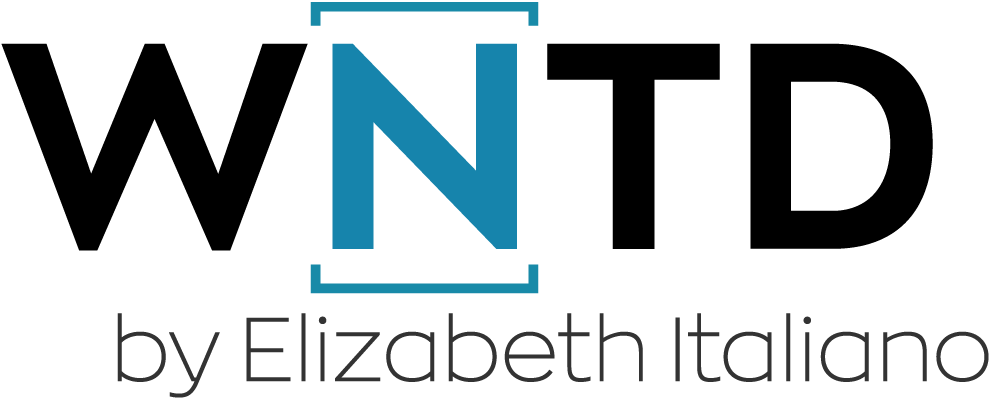Misalignment among go-to-market teams—Sales, Marketing, Customer Success, and others—can slow deal velocity, muddle messaging, and jeopardize customer retention. Despite sharing common goals, siloed strategies and disconnected workflows often hinder revenue growth. The SKO (Sales Kickoff) is your chance to fix this. By bringing everyone into the same room, you can break down barriers, align on strategy, and transform cross-functional collaboration into a competitive advantage.
As the SKO season approaches, revenue leaders are busy planning agendas, setting strategic goals, and preparing to energize their teams for the year ahead. While SKOs are traditionally used to align on strategy, conduct training, and celebrate past achievements, many organizations miss the opportunity to fully leverage the presence of all revenue-generating teams in one place.
Having Sales, Marketing, Customer Success, and sometimes even Product and Finance together creates a powerful forum for collaboration and innovation. It’s the perfect moment to break down silos, align cross-functional strategies, and supercharge your organization’s growth engine.
Beyond the basics of goal-setting and skill-building, here are some fresh ideas to make the most of everyone’s presence at SKO. These topics can drive deeper alignment, spark innovation, and position your team for cross-functional success in the year ahead.
1. Crafting Unified Messaging Across Teams
Consistency is key when it comes to revenue generation. Your customers should hear a unified story, whether they’re interacting with Marketing, Sales, or Customer Success.
How to Use SKO for Messaging Alignment:
- Host an interactive workshop where teams refine the company’s value proposition together.
- Create cross-functional groups to tailor messaging for key personas and ensure consistency across campaigns, sales conversations, and customer engagements.
- Have Marketing share upcoming campaign themes and collateral to align Sales and CS teams on their role in amplifying these efforts, while also allowing Sales and CS to provide feedback. This is a great time to make these efforts collaborative and take advantage of everyone’s collective knowledge.
- Implement a common go-to-market framework across all of GTM to ensure better alignment and structure that drives revenue more efficiently. The PART framework is great for this as it was designed for all go-to-market and not just siloed to one team. See this post for customer success use cases and this post for how it can be used in marketing.
Outcome: Unified messaging builds trust with customers, increases brand equity, and helps teams confidently address customer pain points with a cohesive narrative. This helps to drive more revenue with the right prospects and customers.
2. Driving Stakeholder Management Excellence
Complex deals and renewals require input and buy-in from multiple stakeholders. Effective multi-threading isn’t just a sales skill—it requires collaboration across teams.
How to Use SKO to Sharpen Stakeholder Management:
- Run role-playing exercises where Sales, Marketing, and CS practice engaging with a multi-stakeholder buying committee.
- Share real-life examples of deals or renewals that succeeded due to strong stakeholder engagement, highlighting cross-functional contributions.
- Equip teams with tools like Mutual Action Plans (MAPs), Success Plans stakeholder maps and influence maps to better map influence dynamics within customer accounts.
Outcome: Teams leave SKO with a playbook for managing stakeholder relationships more effectively, leading to stronger deal velocity and renewal rates.
Need help prepping? Leverage our content on stakeholder management and Mutual Action Plans and Crafting Effective Success Plans to help you get started. You can also check out this webinar on Mastering Multithreading: Essential Skills for Developing Effective Stakeholder Relationships that we ran with Melo Associates.
3. Building Resilience and Adaptability
Revenue teams face constant change, from market conditions to buyer preferences and internal shifts. Building resilience isn’t just about enduring these changes—it’s about thriving in the face of them.
How to Use SKO to Foster Resilience:
- Host a leadership panel on lessons learned from navigating past challenges, including how teams adapted to shifting priorities.
- Facilitate team discussions on anticipating and preparing for potential market changes in the year ahead.
- Run a win/loss analysis and summarize key learnings from it.
- Identify where your team as a whole needs learning and development. For example, do they need to increase their industry knowledge so they can engage with your ICP, prospects and clients more effectively? Or do they need to develop their business acumen? Use this as an opportunity to upskill your entire GTM team.
Outcome: Teams leave SKO feeling equipped to tackle uncertainties with confidence and adaptability, ensuring sustained performance even during turbulent times.
Need help prepping? Leverage our content on win/loss analysis to help you get started. You may also enjoy our The Modern Day Approach to Account Planning & Research course and our Persona Driven Persuasion course that is part of our Quest to Quota Attainment series (and yes, we also run these live as part of a SKO keynote and/or workshop).
4. Streamlining the Buyer and Customer Journey
The landscape of business buying is undergoing a dramatic transformation. When was the last time your teams collectively examined the entire buyer and customer journey? SKO provides the perfect forum for identifying gaps and opportunities for improvement.
How to Use SKO to Optimize the Customer Journey:
- Conduct a live “buyer and customer journey mapping” session where teams pinpoint key touchpoints and identify potential friction.
- Share feedback from customers, prospects, and internal teams to uncover areas where processes or messaging could be refined.
- Collaborate on an action plan to address these gaps and ensure a seamless experience across departments from buyer enablement to customer adoption and growth
- Align your revenue teams on key buyer and customer milestones such as the marketing and sales handoff, sales to CS handoff and run workshops that align tactical approaches like Mutual Action Plans and Success Plan approaches so that buyers turned clients experience a cohesive customer journey that leads to retention and expansion growth.
Outcome: A streamlined buyer and customer journey leads to improved sales results, higher satisfaction, increased retention, and a stronger competitive edge. This is an opportunity for your organization to achieve efficiency without sacrificing effectiveness by achieving cross-functional alignment and avoiding costly friction.
Need help prepping? Leverage our content on buyer enablement to help get you started.
5. Setting the Stage for Competitive Differentiation
Your SKO is the ideal place to sharpen your competitive edge. By aligning teams on how to differentiate your solutions, you can empower them to win more deals and renewals.
How to Use SKO for Competitive Strategy:
- Host a session where Marketing shares insights on competitors’ positioning, and teams brainstorm ways to stand out.
- Equip teams with updated competitive battle cards that include input from Sales, CS, and Marketing.
- Discuss how to address common objections and position your solution as the clear choice in the market.
- Let’s face it: many companies’ buyer and customer journey engagements leave a lot to be desired, but this also means it is an opportunity for you to stand out against the competition. With many industries having more competition than ever before, the ones that win will pay attention, not just to the product, but to the entire end-to-end buyer and customer experience. Leverage SKO as an opportunity to align on a truly best-in-class experience that drives new business revenue, renewals and expansion growth.
Outcome: Teams leave SKO confident in their ability to articulate your unique value and win against competitors.
Need help prepping? Leverage our content on the PART framework to help you approach this exercise from a different angle. Consider our Sales Skills for Buyer and Customer Enablement course that drives revenue from new business and existing customers while also delivering on a great buyer and customer experience.
6. Elevating Discovery Skills Across Revenue Teams
Discovery is no longer just a Sales skill—it’s a core competency for all GTM teams. Whether uncovering prospects’ pain points, identifying churn risks, or exploring expansion opportunities, effective discovery requires tailored approaches that align with the unique dynamics of each customer interaction. However, the methods that work in sales can backfire when applied to existing customers without adaptation.
How to Use SKO to Sharpen Discovery Skills:
- Teach Cross-Functional Discovery Techniques: Host workshops that equip teams with tailored discovery skills for different scenarios—Sales teams can sharpen prospecting techniques, Customer Success can focus on identifying early churn signals, and Account Management can refine strategies for uncovering expansion opportunities. Introduce a unified framework, like PART, to establish a consistent approach and shared language across all teams throughout the buyer and customer journey. This approach not only trains teams to adapt their tactics to prospects versus existing customers but also ensures that everyone works off the same framework, improving cross-team collaboration and knowledge sharing for stronger, more cohesive outcomes.
- Address the Cost of Inaction: Train teams to uncover the risks and impacts of the status quo for both prospects and customers. Equip them with the tools to articulate why solving these issues is urgent and meaningful.
- Differentiate Approaches for Prospects and Customers: Explore how discovery differs between new prospects and existing customers. For instance:
- Sales may focus on identifying new pain points and building urgency for change.
- Customer Success may focus on ensuring value realization and uncovering dissatisfaction before it becomes a churn risk.
- Expansion efforts require balancing the understanding of the customer’s current environment with forward-looking growth opportunities.
- Run Real-Life Role-Plays: Conduct role-playing exercises where teams navigate scenarios such as:
- A prospect resisting change due to the comfort of the status quo.
- An existing customer raising concerns about renewal.
- A customer presenting vague interest in expansion opportunities but not committing.
- Discuss Common Pitfalls: Highlight how overly sales-centric discovery tactics—like applying too much pressure—can erode trust with existing customers. Instead, focus on empathetic questioning and co-creating solutions.
Outcome:
Teams leave SKO equipped to approach discovery with nuance, tailoring their methods to each situation. This leads to stronger deal velocity, better churn prevention, and more effective expansions, all while avoiding tactics that can damage relationships with current customers.
Need help prepping? Leverage our content on the PART framework to structure discovery questions and develop problem statements that resonate across your entire revenue team. You may also enjoy our workshops on crafting empathetic discovery techniques that balance sales urgency with customer care.
Final Thoughts
Your SKO is more than just a chance to set goals and conduct training—it’s an opportunity to inspire, align, and energize your teams for the year ahead. By going beyond the basics and leveraging the collective power of everyone in the room, you can create an SKO that drives lasting impact.
Remember, the magic of SKO lies not just in the presentations and workshops but in the connections and collaborations that happen when teams come together. Use this time wisely to align strategies, celebrate successes, and build the foundation for a winning year.
Let’s make this SKO season the most impactful yet. Ready to get started? Let’s go!If you need hands-on support for your SKO and other revenue-generation efforts, check out the services we offer or contact us directly. While we can help with your SKO directly, our support and services don’t stop there. We can work with your teams beyond your SKO event to ensure there is adoption and the great ideas, training and collaboration shared at SKO translate into lasting change that drives revenue in a sustainable way.




